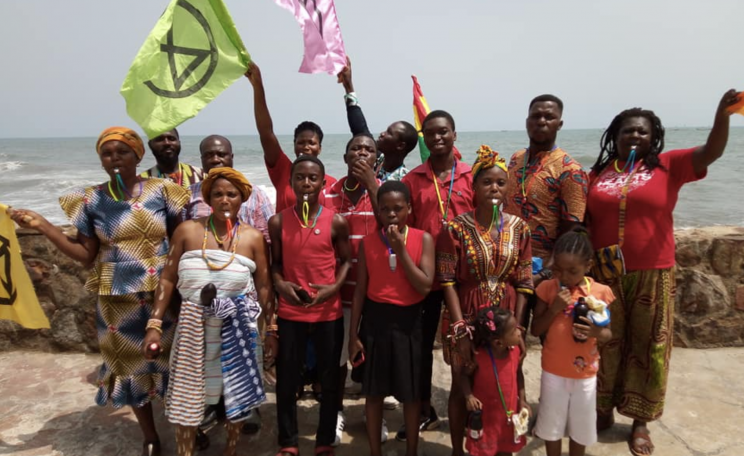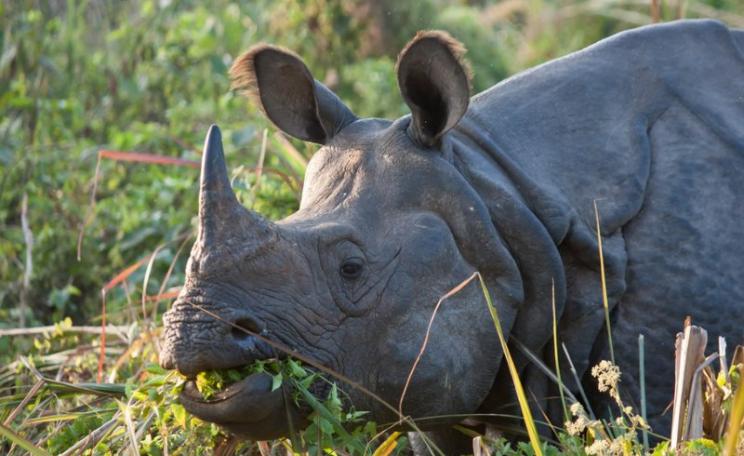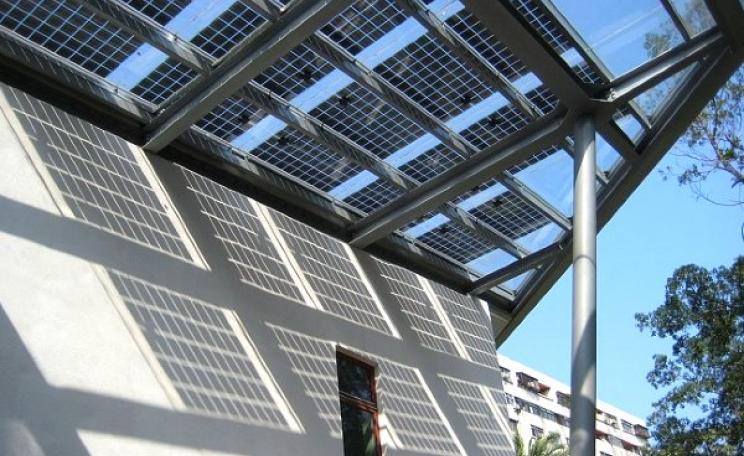*
In the fifteen years since the Canadian ore mining company Dundee Precious Metals (DPM) began extracting ores in Bulgaria, the company’s relationships with the public and authorities have really evolved.
Lyubomir Haynov, operation director of the local branch of the Canadian DPM, argues that the technologies applied in the new gold mine in Krumovgrad rate among the most advanced in the world.
Konstantina Gradeva-Vassileva, the Director for Sustainable Business Development, agrees: “We have learnt a lot about the environmental and social impact of mining”.
Local response
DPM is controlled by the Canadian billionaire Ned Goodman. The company bought the concession rights of the Chelopech ore mine - one of the big deposits of gold in Europe - in 2003.
The price was set at 26 million dollars, and in several years the mine scored annual sales of hundreds of millions. Due to stark public dissent, the company failed to expand its Bulgarian production with cyanide technologies.
Instead, the Canadians acquired a smelter in Namibia, to which they ship the Chelopech concentrate containing gold, copper, and large amounts of arsenic. The ore mine in Krumovgrad, Bulgaria, in the Eastern Rhodope Mountain is the next phase of DPM expansion.
Initially, the locals opposed the mine, but a cunning PR strategy and some pressure from the authorities gradually changed their attitudes. Vasvi Ibriam, the mayor of the Sarnak village near the gold mine, said: “It’s true, people get annoyed by the rock blasts and the dust. But we have to endure this for the jobs’ sake.”
According to Vasvi, every man who wants to work now may get a job in Krumovgrad – not only at Dundee and its contractors but also at the new rubber factory or in the big municipal projects.
Environmental impacts
Unofficially, the operation in Krumovgrad will commence in full in the spring of 2019 with the opening of the flotation factory. The technology envisages lower environmental impacts: there will be no tailing pond, and the water used in the production process will be purified to drinking quality before being poured back into the nearby river.
Haynov proudly stated that they are "certainly the first ore mine in Bulgaria to do this".
The online system for environmental monitoring developed by the company reveals many cases of overshooting the permissible limits of fine particles around the mining site.
In addition, DPM created a fund worth $5 million to back up small and medium-scale local businesses. This social support might be inspired by the EBRD – last year the development bank entered the Dundee family by swapping an extended credit line for a 10-percent share in the company.
No doubt, the investor’s efforts in Chelopech and Krumovgrad deserve praise. Still the Canadian company cannot turn into a saint overnight – neither in environmental nor social or fiscal senses.
Arsenic levels
In the summer of 2015, a mission of Bulgarian environmentalists visited the town of Tzumeb in Namibia to get a firsthand view of the DPM smelter situated there.
Unlike the Bulgarian branch - for whom public communications seem to be of highest priority to the company - the management of the African branch denied a meeting with the guests.
Nevertheless, with the help of local activists the mission proceeded to explore the biggest problem in Tzumeb – arsenic dust. The above photograph is an aerial picture of the arsenic dumpsite in Tzumeb.
The polymetallic ores of Chelopech have over five percent arsenic content, and the technology used in the Namibian smelter is not suited to process them safely.
When the high-grade arsenic concentrates from Bulgaria started to enter in the 2010s, the smelter’s workers felt the difference and energetically protested. The authorities intervened, and production volumes were halved. Yet from the beginning of 2014, the production volumes were set at two times the initial level.
Toxic dust
In 2012, on the request of the union activist Oscar Kakunga (latter dismissed) a full-scale health examination of the smelter’s workers took place. 1,722 probes were taken, and in 69 percent of the cases the concentration of arsenic in the workers’ blood and urine exceeded 100 μg/g.
In the neighboring South Africa, the reference value for over-exposure to arsenic is 50 μg/g. The World Health Organization (WHO) holds that “a safe level of arsenic cannot be established”, since any exposure is extremely hazardous.
The management states that after 2014 the levels of arsenic in the workers’ urine have diminished without citing numbers, the EBRD takes that at face value.
Several thousand tons of arsenic trioxide from Tzumeb are sold to Malaysia and South Africa to be used as pesticides, a substance not allowed in the EU. The Bulgarian mission managed to get hold of photos of the storage site for the surplus arsenic. Only several hundred meters from residential buildings, thousands of tons of arsenic are stored in ordinary sugar bags in the open – decaying under the African sun.
Genady Kondarev, who took part in the Tzumeb investigation, recalled: “There was a colossal quantity of toxic dust piled on the site. After a couple of years under the hat of Dundee, this facility had almost entirely used up its storage site for arsenic waste. Since the shocking results of the medical tests in 2012, we haven’t heard about newer health checks with publicly accessible results regarding the arsenic levels in the worker’s organisms”.
Corporate networks
In addition to its low environmental standards and cheap labor, Namibia attracts foreign investors with zero tax rates. The smelter of Tzumeb lies in a Special Processing Zone, freed from corporate taxes and VAT.
The Human Development Index ranks Namibia 129th in the world, yet DPM – and thus its shareholder EBRD, a bank that explicitly states its social commitments – do not feel embarrassed by the fact that they deny the national budget the funds that might be used for healthcare or education purposes.
The Tzumeb smelter also processes concentrates from the El Brocal mine in Peru, which has even higher arsenic content, as well as other sources.
The output of the smelter is “black copper” - an alloy refined up to 98.5 percent - which contains not only copper and gold but also several valuable rare earth metals. It is a mystery where the final processing to marketable ingots is taking place and, correspondingly, who collects the value of the rare earths. The only hint we get is from DPM's corporate website, which states that it supplies "refineries in Europe and Asia”.
Until recently, the output of the smelter was brought to the market by the Louis Dreyfus Company, the letter "D" in the notorious ABCD group of corporations that dominate the world’s food trade.
The Metal Department of Louis Dreyfus had operations in Peru, Namibia, Australia, Mexico, China etc., and scored high profits. However, in the middle of 2018 this metal division was sold to the Chinese NCCL Natural Resources Investment Fund. Prior to this, Dundee Precious Metals had stated that it has a long-term trade contract with Louis Dreyfus. The new destination of Bulgarian gold is obviously China.
Black tax holes
China already buys uranium ores and other radioactive materials from Namibia worth 100 million dollar per annum.
The UNCTAD database – the UN body for trade and development – revealed that in the last years the annual copper exports from Namibia to Switzerland averaged 150 million dollars, plus 100 million dollars in copper concentrates. This trade flow will probably now turn to Asia.
For the six years between 2012 and 2017, the ore mine in Chelopech generated nearly 1.1 billion euro incomes and 380 million euro profits before taxes. For the whole period, the company paid the Bulgarian budget 38 million euro in corporate taxes and 30 million euro in concession fees.
Excluding the taxes and social contributions on salaries, the state manages to collect only six percent of the value of the gold extracted from its earth.
Tax optimization gathers pace when profits leave the low-tax Bulgarian environment. The Bulgarian Trade Registry revealed that DPM has two companies registered on the Curacao Island and another company called Vatrin Investment Ltd.based on the British Virgin Islands – owned by a cooperative with headquarters in the Netherlands. According to Dutch trade law, under certain circumstances cooperatives do not pay dividend taxes; there is also an option for Dutch cooperatives to avoid paying a tax on profits.
Dundee Precious (Barbados) acquired the concession rights of the Chelopech deposit in 2003. With such an elaborate offshore network it is no wonder that while the Chelopech mine records annual profits in order of 35-45 million euro after taxes, the mother company based in Toronto declares only tiny profits or even loss.
Across the seas
Every year 100 thousand tons of concentrate from Chelopech travel for 9,000 miles to reach Namibia, while that same amount arrives there from other places, including the Pacific coast of South America.
This is only a fraction of the world’s huge marine trade in ores and concentrates – a practice very inefficient in the ecological sense. The world still closes its eyes for issues like noise contamination of the seas, and the quality of the ship fuels, which are the main emitter of soot, Sulphur and Nitrogen oxides.
At least, the EBRD sees nothing worrying happening between the model ore mines in Bulgaria and the shiny golden bars.
The ore trade impacts also the global development patterns: poor countries specialize in delivering raw materials, the processing remains for regions with loose environmental standards, and the surplus value in the refining and marketing goes to the advanced. The established global free trade regime just cements the inequality in industrial development of the countries.
The Krumovgrad ores will not be shipped to Tzumeb since their arsenic content is low. Indeed, there is something different in their case. A long and hard opposition of the stakeholders at last guaranteed the acceptable quality of the DPM extractive operations.
Daniel Popov, a Bulgarian NGO mining expert, said: “The management of DPM saw potential in being environmentally responsible. Krumovgrad is a lesson of how interacting with the locals and the NGOs might alter the initial business plans until they become acceptable for the whole society”.
Still, gold industry generates over two billion tons of solid waste, in addition to chemicals used in the extraction, transportation emissions, and the health damages of thousands of workers. Just one middle-sized gold mine like that in Krumovgrad will create 15 million tons of solid waste and over six million tons of tailings during its lifetime.
This Author
Dimitar Sabev is a Bulgarian journalist and economist. This article is the result of a long-term collaboration between Sabev and Za Zemiata (Friends of the Earth, Bulgaria).




